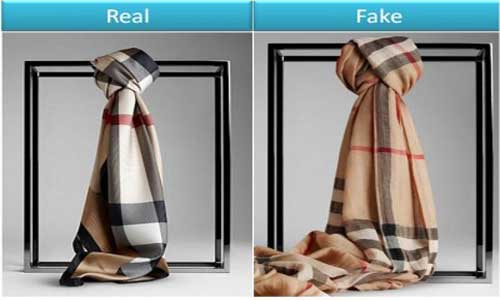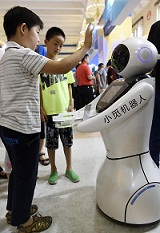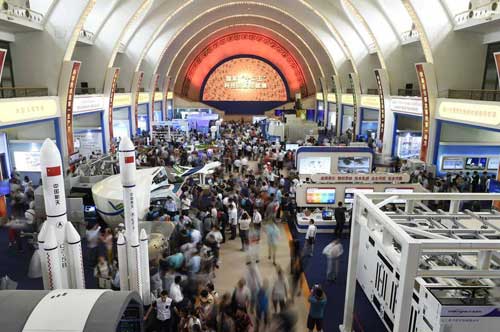FW
EarthColors of Archroma won the Gold Winner at the the OutDoor Industry Award 2017, Sustainable innovations Category, presented at a ceremony held on June 18, 2017. Among the winners, the Gold Winner Award distinguishes further the EarthColors range - out of the 330 entries - as one of the most innovative products of the industry in what is one of the highlights of the OutDoor Show held in Friedrichshafen, Germany, until June 21, 2017.
EarthColors are Archroma's patent-pending new method of creating warm ternary shades from nature. These high performance dyes are synthesized from natural waste products of the agriculture and herbal industries, such as almond shells and rosemary leaves, replacing the oil-based raw materials typically used in dyestuff manufacture. Earthcolors are available in a range of six dyes, covering a palette of natural shades. They are fully traceable from the source to the shop – thanks to NCF chip attached on the clothing hangtag.
Visitors at Archroma's can discover why company’s such as Kathmandu and Flocus who have selected EarthColors. The technology will also be on display in a special exhibition and on the official website of the OutDoor show.
Nuria Estape, Head of Marketing and Promotion for Archroma’s Brand & Performance Textile Specialties business, commented that the company is extremely proud to receive one of the most prominent Awards in the outdoor industry also theOutDoor Industry Award will surely help convince more brands and retailers to explore and adopt more nature-friendly solutions from Archroma.
Manel Domingo, R&D Head for Special Dyes at Archroma, who developed the EarthColors technology, EarthColors was more than five years in the making and the project is still evolving in the laboratories. With the planet reaching the limit of its resources, it is important to offer more sustainable options to the consumers and this is the reason there is no efforts to develop groundbreaking innovations .
"Counterfeit has become a burgeoning trillion-dollar global market despite efforts by international authorities. Fashion garments are some of the most reproduced products with the greatest proportion originating in China. The huge growth in the printed textile market, the increasingly affordable cost of direct-to-garment (DTG) printers and the explosion in online trading are some of the reasons fuelling the growth of counterfeit in the UK market."

Counterfeit has become a burgeoning trillion-dollar global market despite efforts by international authorities. Fashion garments are some of the most reproduced products with the greatest proportion originating in China. The huge growth in the printed textile market, the increasingly affordable cost of direct-to-garment (DTG) printers and the explosion in online trading are some of the reasons fuelling the growth of counterfeit in the UK market.
According to Mohsin Omarji, MD, Rialto Designs, with the direct-to-garment market and its new digital technology, one can pick up machines very cheaply now and it’s easy enough for people to stick them in a garage and set up an operation selling garments on eBay.

Digital textile equipment supplier iSub’s Simon Lymn highlights digital is offering new ways to counterfeit goods – fashionable home interiors or fashion wear – and it’s quite rife in certain textile hubs where there is a high concentration of different textile producers and printers. The big problem starts when design agencies outsource their printing. As soon as they send their designs by whatever digital medium it is, the print house then has the design and is able to print it for another client. That’s where the problem lies because they are relying on a company to keep their intellectual property (IP) safe and not profit from it. Most cases never end up in court because they take too long time and fashion cycle keeps changing faster.
What does the law say?
IP, copyright and trademark infringement is primarily enforced by Trading Standards and is a crime that, depending on its extent, can carry some hefty penalties: up to 10 years in prison and an unlimited fine on indictment to a Crown Court, or six months in prison and an unlimited fine through the magistrates’ courts. The Chartered Trading Standards Institute’s lead IP officer Gavin Terry explains that reproducing designs on garments and interior fabrics could contravene a number of laws including the Trade Marks Act and Copyright, Designs and Patents Act.
There is a possibility that a printer may unknowingly reproduce something, where the copyright or IP does not belong to the client, and Terry says that with registered designs and copyright cases, there is a requirement to prove guilty knowledge, however infringing goods are liable to seizure and forfeiture, irrespective of guilty knowledge or not.
What’s a new design?
Copyright law itself is quite lenient as it only requires three changes to be made to a design for it to be considered a ‘new’ design. These changes can be so small as to be insignificant, according to fabric and wallpaper designer Vanessa Arbuthnott.
The haute couture market is taking steps to limit counterfeiting with brands incorporating haute-tech features into their garments, outside of the digital printing process, such as UV-printed yarns, synthetic DNA-laced security markers, invisible inks such as that launched last year by Kodak-backed eApeiron and of course the more common label holograms and QR-codes.
In a new technique, a tiny feature, indiscernible to the naked eye, is incorporated into a digital design. It is an approach being taken by numerous fashion brands, according to Jos Nostermans, worldwide commercial manager for digital textiles, SPGPrints. In his opinion, one of the best measures to protect against digital print counterfeiting in the fashion industry, lie in turnaround times. Some of the huge brands change collections so quickly that counterfeiters can’t possibly copy, print and distribute fast enough.
In a bid to eliminate child labor in the country, India has given approval for two conventions of International Labor Organisation (ILO).
India has been working in a concerted manner to eliminate child labor by following a multipronged strategy including stringent legislation and a project based approach. India will affirm its commitment for a child labor free India by ratifying ILO convention 138 regarding admission of age to employment and convention 182 regarding the worst forms of child labor.
Ratification of these two core conventions by India has not only national but international ramifications for eradication of child labor. Almost 99 per cent of children in the world are covered by convention 182. Coverage of convention 138 has been enhanced from approximately 60 per cent to almost 80 per cent of the world’s children.
India is the 170th ILO member state to ratify convention 138, which requires states to set a minimum age under which no one shall be admitted to employment or work in any occupation, except for light work and artistic performances.
Textile workers around the world, many of whom are young women and children, face exploitations such as long working hours, low wages, uncertainty, violence and hazardous conditions.
Founded by Vicky Hassan in 1991 Miss Sixty, is all set for a global relaunch. The overall relaunch of Miss Sixty has been supervised by denim guru and connoisseur Adriano Goldschmied. The new collection has been entirely redesigned and upgraded to a premium denim level. In Asia Miss Sixty plan to open 150 stores between China and Hong Kong and will also start selling in Japan from S/S 2018.
The new Miss Sixty wants to keep its own original denim identity as 55% of its total offer will continue to be denim pieces, though it also includes a vast selection of dresses, tops, jackets together with some accessories and footwear models. Miss Sixty has already started its expansion strategy in Europe and Asia. In Europe they manage operations through their Sixty distribution head offices in Rome and their They aim to start selling through about 30 stores in Russia, 20 in Italy with key partners such as Sorelle Ramonda and Den Store, and about 20 in Germany. Aiming to start working with about 50 doors in Europe by F/W 2017/2018 and grow to about 100 by end of S/S 2018, the brand has ambitious plans.
In the first quarter of this year, Shishi’s exports of textiles and garments were up 36.6 per cent year-on-year.
Shishi is a textile industrial cluster in southeast China. In the first quarter of this year, industrial value added of enterprises above a designated size was up 7.2 per cent year-on-year, one percentage point higher than the level in January to February; sales revenue was up 8.4 per cent with the production to marketing ratio up to 99 per cent. The textile and garment industry’s sales revenue was up 9.6 per cent year-on-year, accounting for 50 per cent of total industrial sales revenue.
To satisfy the needs of the EU and US markets, local textile enterprises have developed a number of new products such as corn fiber fabric, carbon fiber fabric and Taiji stone fiber fabric. In the past, locally-made textiles and garments were mainly low-end products. Now the situation has significantly improved thanks to the increasing share of medium- and high-end products in total production.
In the first quarter of this year, Shishi's exports of textiles and garments to markets along the Belt and Road accounted for 45.8 per cent of the total, rising from 38.6 per cent of last year.
In the first three months of the year, Japan recorded a surge in volume of apparel imports by 0.30 per cent. However, values fell by 2.66 per cent during the period on a year-on-year basis.
Sri Lanka and Vietnam emerged as the biggest positive apparel exporters to Japan in the first quarter. Sri Lanka noted a 6.74 per cent rise in value and a 133.46 per cent rise in volume. Vietnam too saw a 7.83 per cent rise in value and a 9.19 per cent rise in volume. Other major Asian apparel giants such as China, India, Bangladesh and Pakistan registered negative growth in their apparel exports to Japan during the quarter.
Japan is the world’s third largest economy. Apparel retailers in Japan have no interest in online retailing despite the fact that e-commerce is one of the biggest emerging revenue generating platforms in the country. Retailers avoid this channel due to profitability concerns. Instead they are seeking to keep prices low in stores. According to them, this practice might boost consumer spending, especially tourist spending, in apparel resulting in more imports by Japan in the year ahead.
The Japanese apparel market and fashion industry witnessed a minor downfall after the earthquake of 2011, but soon bounced back overcoming the economic concerns. The categories trending in the Japanese apparel markets are women's outerwear, sportswear, and children’s wear. Recent innovations in functional garments have increased the sales and increased the unit price of such clothing.
In the first three months of this year, China's chemical fiber production was up 6.87 per cent year-on-year. Imports of chemical fibers were up 11.44 per cent year-on-year and exports were up 2.96 per cent.
Earnings of the chemical fiber industry were up 84.68 per cent, the fastest growth among all sectors of the textile industry. In this period, the profit rate of prime business revenue stood at 5.22 per cent, improving 1.97 percentage points over the same period of last year.
In the first quarter of this year, China’s chemical fiber industry saw improved operating quality and profitability while investment rebounded. Influenced by fluctuation of oil price, the prices of main chemical fibers first rose, then declined, with the average price higher than that in the same period of last year, but still in a downward trend.
China’s chemical fiber industry accounts for 70 per cent of global production. The industry covers a range of products from conventional chemical fiber to high-performance chemical fiber to bio-based chemical fiber. Chemical fiber is an important basic raw material industry, involving aerospace, defense, automobile, health and other industries.
Turkey, the United States and Pakistan are the main buyers of China’s chemical fiber.
During the first quarter of 2017 the European Union’s apparel imports rose 0.33 per cent in value year-on-year. Particularly in March, it registered a strong growth in value of apparel imports by 2.56 per cent when compared with the growth a month earlier in February.
Knit imports were down 0.83 per cent in volume but up 1.91 per cent in value. On the other hand, imports of the woven category fell both in value (1.07 per cent) and volume (2.82 per cent) during the review period.
China and Bangladesh remained the top two apparel exporters in the first quarter of 2017 to EU. China’s exports of apparel to the EU were down 4.95 per cent in volume from the previous year and down 3.90 per cent in value from the previous year. Bangladesh’s exports were up 1.11 per cent in volume from the previous year and up 5.24 per cent in value from the previous year.
India’s value-wise apparel exports to the EU fell by 1.28 per cent on a year-on-year basis but volumes rose 1.43 per cent from a year earlier.
Pakistan’s total exports to the European Union increased by 38 per cent from 2013 to 2016, while textile exports increased by 55 per cent in value and 33 per cent in terms of quantity during the period under review.
Bangladesh’s exports rose nearly 1.4 per cent in May from a year earlier. For July to May, the first 11 months of the country’s 2016-17 financial year, exports rose 3.7 per cent from a year earlier.
Multifarious adverse conditions in international markets have created a slight pressure on readymade garment exports. The readymade garment sector accounts for 80 per cent of Bangladesh’s shipments.
Shipments of readymade garments, comprising knitwear and woven items, were up 2.2 per cent in July to May. Exports in the financial year that ended in June 2016 were up 9.7 per cent from the previous year, on the back of stronger garment sales. The country’s exports to the European Union have improved significantly and the hope is that exports to the US market will also increase considerably with accelerated economic recovery.
The World Bank is helping Bangladesh diversify exports beyond the garment sector. The project will improve the competitiveness of existing and potential export-oriented industries such as leather, footwear, plastics and light engineering, where Bangladesh has demonstrated a competitive edge.
The project will help create more than 90,000 jobs in sectors other than readymade garments. It will help the economy to integrate further into the world trading system, and provide better jobs to Bangladeshi youth entering the labor market in the next decade, with a particular focus on improving female labor participation.
A recent research by Changjiang Securities reveals that with China's high-tech exports significantly improving, the internal structure of the computer and communication technology is relatively maturing forward along the areas of material and life technology products such as tilt, overall level of technology content of export products. High-tech products are the direct embodiment of China's technology intensive products, accounting for the proportion of China's exports rose rapidly from 17 per cent in 2001 to 31 per cent in 2009, since then remained relatively stable.

A recent research by Changjiang Securities reveals that with China's high-tech exports significantly improving, the internal structure of the computer and communication technology is relatively maturing forward along the areas of material and life technology products such as tilt, overall level of technology content of export products. High-tech products are the direct embodiment of China's technology intensive products, accounting for the proportion of China's exports rose rapidly from 17 per cent in 2001 to 31 per cent in 2009, since then remained relatively stable. From the point of view of high-tech product structure, computer and communication technology account for 69 per cent of high-tech exports, and are in absolute dominant position. Since 2004, the export growth of computer and communications technology products has continued to decline, which has been a drag on high-tech exports. Without regard to computer and communication technology, other high-tech products (electronic technology, life science and technology, computer integrated technology and materials technology and other cutting-edge technology products) export share is still rapidly rising.
Disappearing working age population

In recent years, the population structure changes, the labour age (15-59 years) population accounted for the trend of decline, labour intensive products exports rely on demographic dividend is gradually disappearing. At the beginning of the reform and opening up, China has achieved rapid economic growth in the past 30 years with a high population volume and population bonus, and a low labour cost advantage into the global division of labour system. In 2010, China's 15-59 year old working age population accounted for the highest value of 70.1 per cent, since then began to fall, while the proportion of elderly people aged over 60 has continued to rise. In stark contrast to China, the demographic dividend in India and Brazil is still strong. Compared with China, the age structure of the population in India is still ‘Pyramid’ shape, which means that the proportion of working age population will continue to rise.
Rising labour cost
With the change of population structure, the labour cost of our country is rising rapidly, and the rate of increase is much higher than that of other major manufacturing countries. The export comparative advantage of labour-intensive products is gradually weakened. In recent years, China's labour costs continue to rise, 2000-2015 years, the average annual per capita wage growth rate of 15.5 per cent, while the same period in Japan and South Korea labour costs increased by an average annual growth rate of -1.5 per cent and 1.2 per cent respectively. From the manufacturing labour cost point of view, in 1995-2015 years, China's manufacturing industry hourly labour costs rose 10 times, the same period India labour costs per hour rose only 1.4 times.
Growing emphasis on R&D
With the accumulation of knowledge and technological progress, China's labour productivity has improved rapidly, trade competitiveness has also been significantly improved, further driving the export structure upgrading. Through the above research, it was found that the structure of China's export products has been continuously upgraded, and the focus has shifted from labour intensive to capital and technology intensive products. Over the past ten years, the proportion of export of labour-intensive products has declined markedly, and the proportion of capital and technology intensive products has risen rapidly. The proportion of labour intensive exports has dropped, which is closely related to the gradual change in population structure and the end of the ‘demographic dividend’ sweet period. With the change of population structure, the cost of labour force (especially the low-end labour force) increases rapidly, which further weakens the export advantage of labour-intensive products.
What lies ahead?
The export of China's capital and competitive advantage of technology continues to improve, such as ship and railway vehicle competitive advantages remain stable, basic metal miscellaneous products, chemical fiber, iron and steel products, aluminum products, machinery and other competitive advantages growing. While the labour advantage has been weakened, the competitive advantage of capital and technology intensive products has been improved as a whole. Sub-industry, ship and railway vehicle competitive advantages remain solid, chemical fibre, chemical fibre filament, iron and steel products, aluminum products, mechanical and electrical trade and strengthen its competitive advantage, competitive advantage is to accelerate development of optical equipment. With the recent gradual warming of foreign demand, exports of ships, basic metals, miscellaneous products, railway vehicles and other industries with strong trade competitive advantages have been significantly restored, and the approximate rate will continue.











